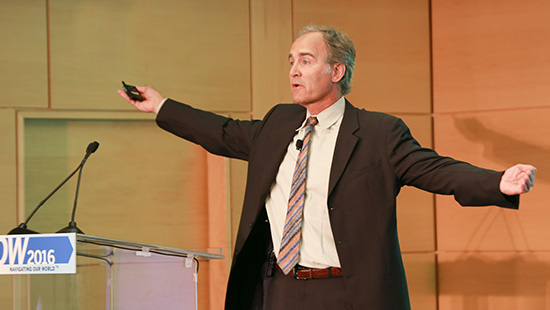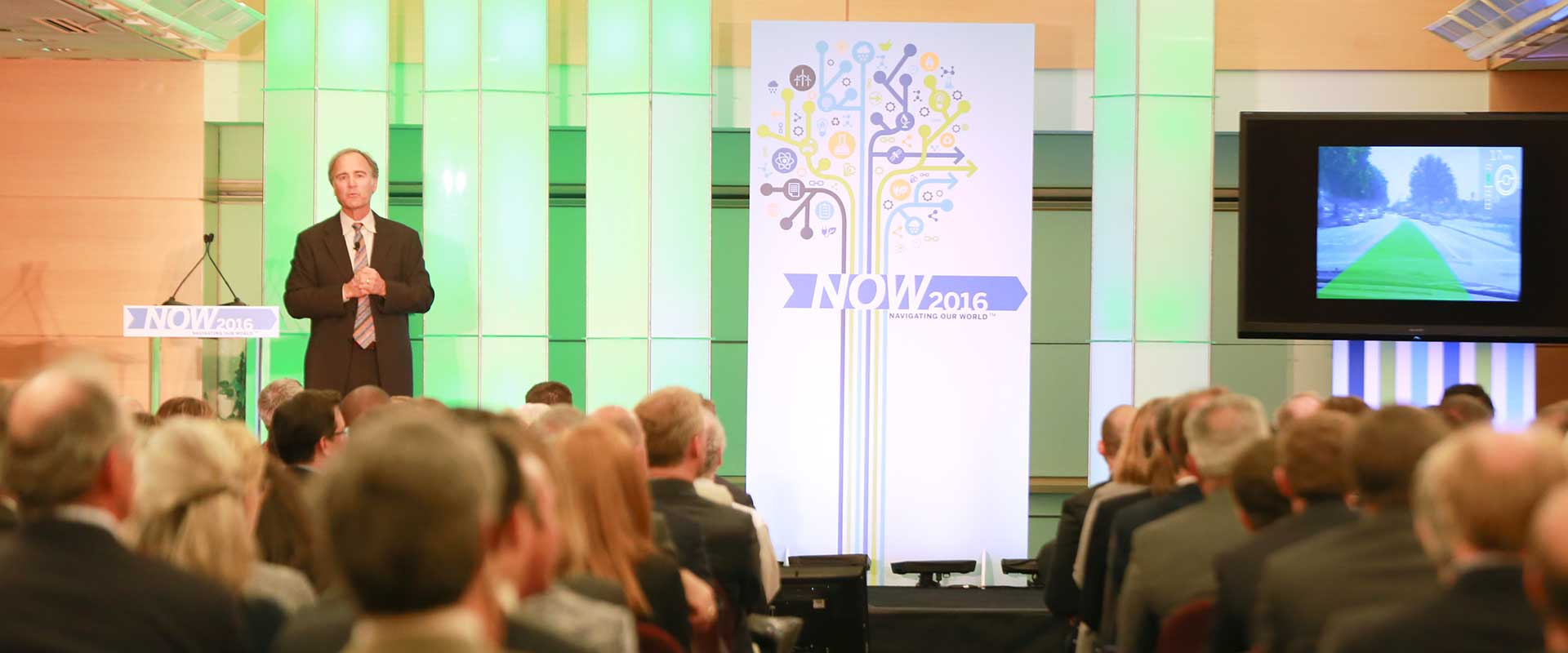
Driverless cars will vastly improve what it means to be “on the road,” according to Lawrence Burns, advisor to Google on the Future of Transportation and Mobility. So-called autonomous vehicles could reduce the 1.2 million annual fatalities on world roads by 80%. Compared with current vehicles, a two-person electric “pod” could be 10 times more energy efficient and dramatically cut per-mile travel costs. Cars would also be used far more efficiently. Currently, the typical vehicle is unused about 90% of the time, logging just 15,000 miles per year compared with the 70,000-mile-per-year average use of a New York City taxi.
The radical change in mobility has five concurrent themes—connected, coordinated, shared, driverless and tailored, said Burns, citing his insights from four decades of research at General Motors and his current position as an advisor to Google. The introduction of autonomous vehicles may begin on a large scale as early as 2018, he said.
It is easy to lose sight of how far human mobility has progressed. In 1903, crossing the U.S. took 63 days. Thirteen years later, the trip took just five days. Today, Google’s autonomous vehicle has logged more than 1.5 million fully autonomous miles.
While consumer demand is fueling the growth of driverless car technology and services such as Uber, regulation is the main force behind development of the electric car, according to Burns. The electric vehicle—including advanced electric and fuel cell drive trains—will probably become commonly used in 2020- 2025, he said. The gasoline-powered engine will not be supplanted in the near term.
 Fast Lane
Fast Lane
Burns suggested that investors get in front of the driverless trend and the need to proactively manage risks. That requires an understanding of what is possible with new technology and new business models, as well as the potential hazards from computeroperated vehicles. He said businesses and investors should keep in mind a maxim—“Do unto others before others do unto you.”
Incumbent auto companies face disruption on many fronts. Companies such as Uber, Lyft and Zipcar are changing ownership needs and the use of cars. Tesla is pushing electrification into the mainstream. Google and Apple, and suppliers such as Mobileye, Delphi and NXP Semiconductor are bringing autonomous vehicles within reach. The traditional automakers are racing to catch up. GM has built a partnership with Lyft and is making its first serious foray into mass-market electrification with the Chevy Bolt, which it rolled out before Tesla’s Model 3. At Brown Advisory, we have taken a selective approach to investing in autonomous cars, mindful of the high levels of disruption. We have invested in companies that have enabled greater technological sophistication in cars, including NXP Semiconductor, Amphenol and TE Connectivity. Meanwhile, we are looking for new winners in the transition to a digital auto, as well as the dinosaurs that fail to evolve.
The views expressed are those of the author and Brown Advisory as of the date referenced and are subject to change at any time based on market or other conditions. These views are not intended to be and should not be relied upon as investment advice and are not intended to be a forecast of future events or a guarantee of future results. Past performance is not a guarantee of future performance. The information provided in this material is not intended to be and should not be considered to be a recommendation or suggestion to engage in or refrain from a particular course of action or to make or hold a particular investment or pursue a particular investment strategy, including whether or not to buy, sell, or hold any of the securities mentioned. It should not be assumed that investments in such securities have been or will be profitable. To the extent specific securities are mentioned, they have been selected by the author on an objective basis to illustrate views expressed in the commentary and do not represent all of the securities purchased, sold or recommended for advisory clients. The information contained herein has been prepared from sources believed reliable but is not guaranteed by us as to its timeliness or accuracy, and is not a complete summary or statement of all available data. This piece is intended solely for our clients and prospective clients, is for informational purposes only, and is not individually tailored for or directed to any particular client or prospective client.
This communication and any accompanying documents are confidential and privileged. They are intended for the sole use of the addressee. Any accounting, business or tax advice contained in this communication, including attachments and enclosures, is not intended as a thorough, in-depth analysis of specific issues, nor a substitute for a formal opinion, nor is it sufficient to avoid tax-related penalties
